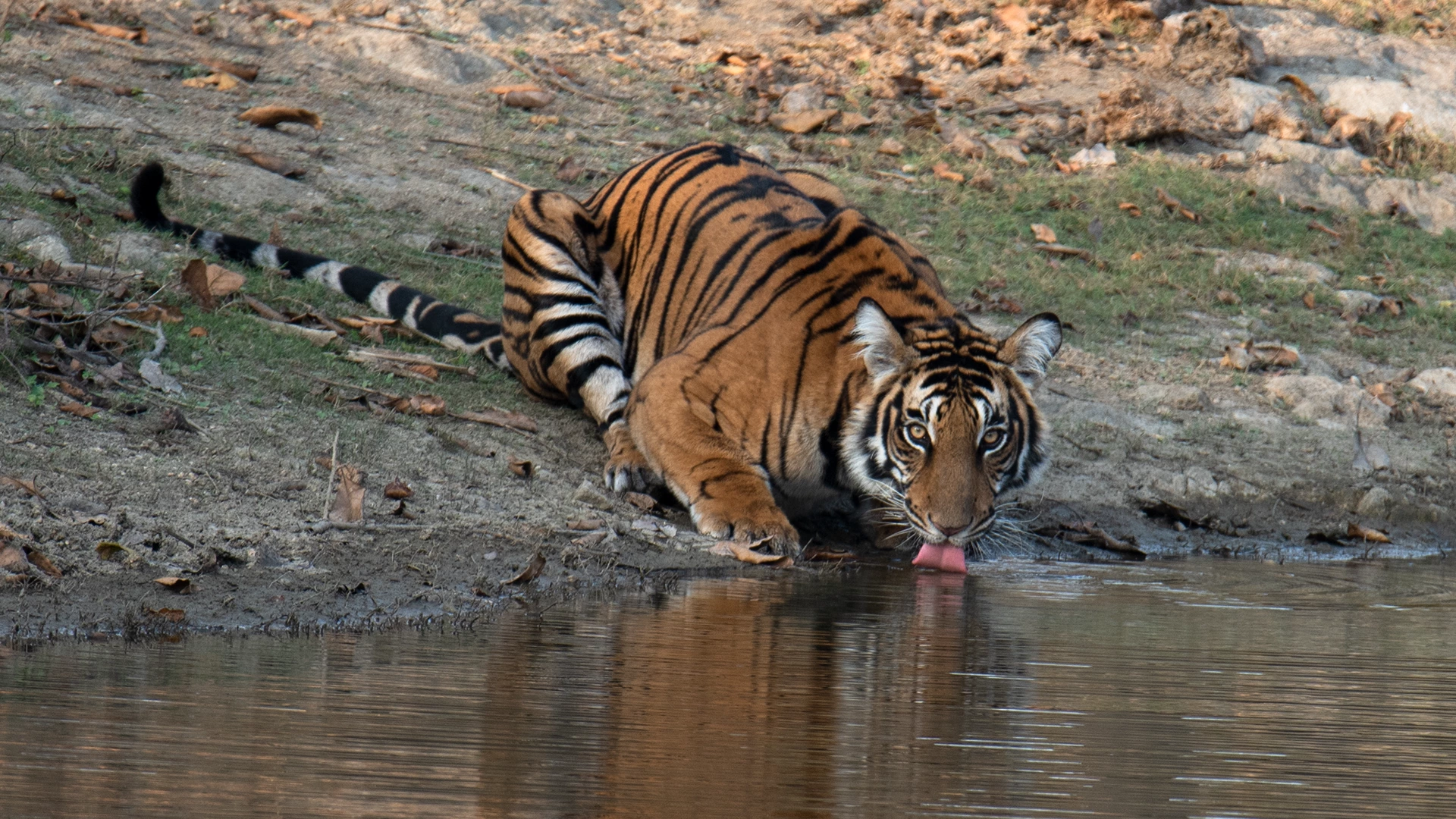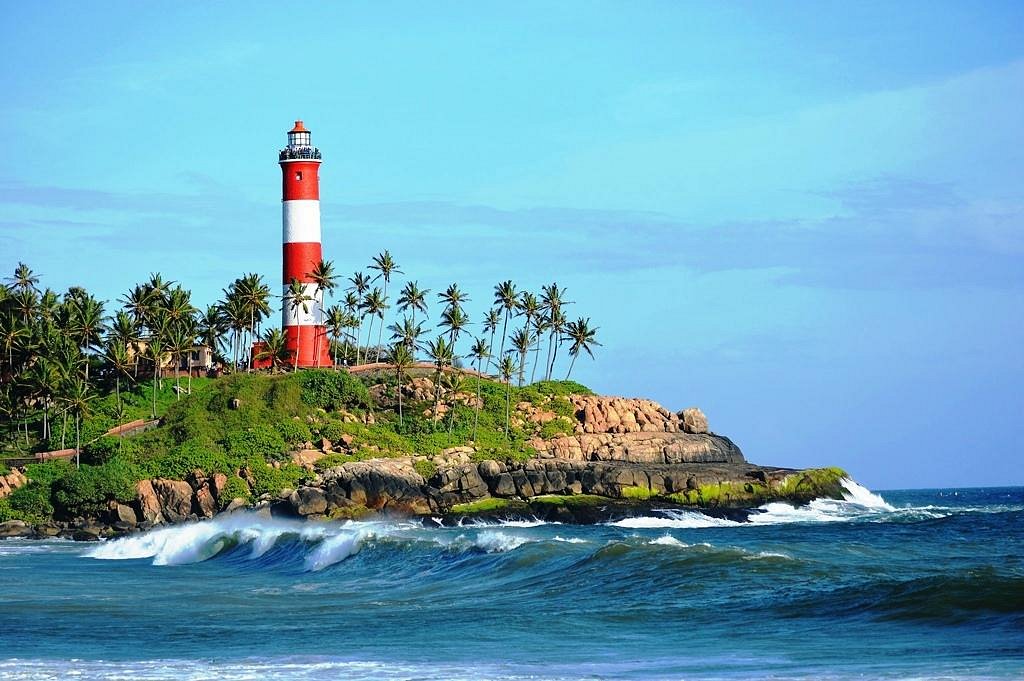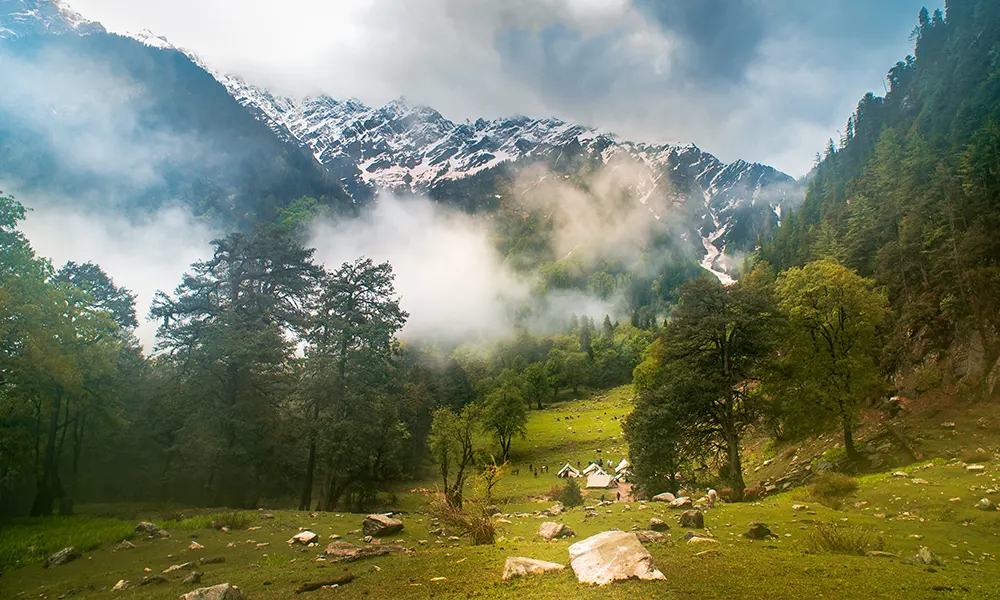Nestled in the lush greenery of Tamil Nadu, Mundanthurai Sanctuary offers a serene escape. This wildlife haven is a treasure trove of natural beauty and biodiversity.
Mundanthurai Sanctuary, part of the Kalakad Mundanthurai Tiger Reserve, is a must-visit for nature lovers. Covering over 895 square kilometers, it promises a rich experience with its unique flora and fauna. The sanctuary is home to various species of animals, birds, and plants, making it a biodiversity hotspot.
This protected area not only shelters endangered species but also offers numerous trekking trails and scenic spots. Visiting Mundanthurai Sanctuary provides a chance to immerse in nature, enjoy bird watching, and explore dense forests. Whether you’re a wildlife enthusiast or simply seeking tranquility, Mundanthurai Sanctuary is an ideal destination.

Credit: en.wikipedia.org
Introduction To Mundanthurai Sanctuary
Mundanthurai Sanctuary is a hidden gem in Tamil Nadu. It offers a serene escape into nature’s lap. The sanctuary is known for its rich biodiversity. Visitors can explore lush greenery and spot various wildlife species. It’s an ideal destination for nature lovers and adventure enthusiasts.
Location And Accessibility
Mundanthurai Sanctuary is located in the Tirunelveli district of Tamil Nadu. Nestled in the Western Ghats, it spans across 567 square kilometers. The nearest town is Ambasamudram, which is about 20 kilometers away. The sanctuary is well-connected by road. Visitors can reach it via buses or private vehicles. The nearest railway station is in Tirunelveli, about 50 kilometers away. The closest airport is in Thiruvananthapuram, approximately 200 kilometers from the sanctuary. Accessibility is convenient for both local and international tourists.
Historical Significance
Mundanthurai Sanctuary has a rich historical background. It was established in 1962 as a wildlife sanctuary. The sanctuary was later merged with Kalakad Sanctuary. Together, they form the Kalakad Mundanthurai Tiger Reserve. The area has been protected for decades. Efforts have been made to conserve its flora and fauna. The sanctuary is home to several endangered species. It plays a crucial role in preserving biodiversity. The historical efforts in conservation make this sanctuary special. Visitors can witness the legacy of these conservation efforts.
Flora And Fauna
Mundanthurai Sanctuary boasts diverse flora and fauna. Home to tigers, elephants, and vibrant bird species, it offers a rich natural habitat. Lush forests and scenic beauty make it a unique place for nature lovers.
Visiting Mundanthurai Sanctuary is like stepping into a world of unparalleled natural beauty. The sanctuary, nestled in the Western Ghats, boasts an incredible diversity of flora and fauna. Whether you are a nature enthusiast or a curious traveler, the sanctuary offers a glimpse into the rich biodiversity that calls this region home.Diverse Plant Species
Mundanthurai Sanctuary is a treasure trove of plant species. As you explore its dense forests, you’ll encounter a variety of trees, shrubs, and herbs. The sanctuary is home to several medicinal plants, which local communities have used for centuries. Teak, bamboo, and sandalwood are some of the prominent trees you’ll find here. Each tree species supports a unique ecosystem, providing shelter and food for numerous animals and insects. Next time you visit, take a moment to appreciate the lush greenery around you. Notice the different leaf shapes and textures. The forest floor is often carpeted with ferns and mosses, creating a serene environment that’s perfect for a quiet walk.Wildlife Inhabitants
The sanctuary isn’t just about plants. It’s also a haven for a wide range of wildlife. As you walk through the trails, keep your eyes peeled for sightings of tigers, leopards, and elephants. These majestic creatures roam freely, adding to the sanctuary’s wild charm. Birdwatchers will be delighted by the variety of avian species. From the vibrant Indian Pitta to the elusive Great Hornbill, the sanctuary offers endless opportunities for birdwatching. Bring your binoculars and a good camera; you never know what you might spot! Reptiles and amphibians also thrive here. The sanctuary’s streams and ponds are home to frogs, turtles, and a variety of snakes. If you’re lucky, you might even witness a snake slithering across your path or a frog hopping into a nearby pond. Have you ever wondered how these animals adapt to their environment? Observing them in their natural habitat can provide fascinating insights into their behavior and survival strategies. Mundanthurai Sanctuary is not just a place to visit; it’s an experience to cherish. The next time you find yourself craving an escape into nature, consider exploring the rich flora and fauna of this sanctuary. What new discoveries will you make?Birdwatcher’s Paradise
If you’re a birdwatching enthusiast, Mundanthurai Sanctuary is a destination you cannot miss. Nestled in the lush forests of Tamil Nadu, this sanctuary offers an unparalleled experience for those who love to spot rare and exotic birds. The symphony of bird calls, the rustle of leaves, and the sheer variety of avian life make it a true birdwatcher’s paradise.
Rare Bird Species
One of the most exciting aspects of birdwatching at Mundanthurai Sanctuary is the chance to see rare bird species. Have you ever seen a Great Indian Hornbill in its natural habitat? This sanctuary is one of the few places where you might spot this magnificent bird. Also, keep an eye out for the Malabar Pied Hornbill, a frequent visitor that adds charm to the verdant landscape.
Did you know the sanctuary is home to the elusive Ceylon Frogmouth? With its remarkable camouflage, spotting this bird is a thrilling challenge. The Ashy Woodswallow and the Black-throated Munia are other species that birdwatchers often get excited about. So, make sure your binoculars are ready and your camera has plenty of memory space!
Best Birdwatching Spots
The sanctuary’s diverse terrain offers multiple hotspots for birdwatching, each with its own unique charm. The first spot to hit is the Karaiyar Dam area. This serene spot not only provides a beautiful view but also attracts a variety of water birds like the Kingfisher and the Indian Cormorant.
If you prefer a more forested area, head to the Kodayar region. The dense canopy here is the perfect setting for spotting the Crested Serpent Eagle and the Common Hawk-Cuckoo. Early mornings are the best time to visit, as the birds are most active then.
Do you enjoy trekking? The trek to the Agasthiyar Falls offers both adventure and birdwatching opportunities. Along the way, you might catch sight of the Blue-winged Parakeet and the White-bellied Treepie. Remember to maintain silence to avoid scaring the birds away.
Finally, make a stop at the Thalaiyanai area. This spot is less frequented by tourists, making it a peaceful location for birdwatching. Here, the Indian Pitta and the Orange-headed Thrush are common sightings.
Have you visited Mundanthurai Sanctuary? Which bird species did you find most fascinating? Share your experience and tips in the comments below. Happy birdwatching!
Adventure Activities
Adventure seekers will love the Mundanthurai Sanctuary. It offers thrilling activities for all. From trekking through rugged trails to camping under the stars, the sanctuary is perfect for nature enthusiasts.
Trekking Trails
Mundanthurai Sanctuary has many trekking trails. Each trail offers unique views and experiences. Hike through dense forests and over rocky hills. Spot rare birds and animals along the way. The trails vary in difficulty, so there is something for everyone. Whether you are a beginner or an expert, you will find a trail that suits your level.
Camping Experiences
Camping in Mundanthurai Sanctuary is unforgettable. Set up your tent in designated areas. Enjoy the peaceful sounds of nature at night. Light a campfire and share stories with friends. Wake up to the sound of chirping birds. The clear night sky offers a perfect view of the stars. Camping here brings you closer to nature. It is a great way to escape the hustle and bustle of city life.
Conservation Efforts
Mundanthurai Sanctuary stands as a testament to India’s rich biodiversity. Conservation efforts here focus on protecting habitats and involving the community. These efforts ensure the survival of many species. They also promote a sustainable relationship with nature.
Habitat Protection
Protecting habitats is crucial in Mundanthurai Sanctuary. Efforts include preventing illegal logging. This keeps the forest intact. It also protects the homes of countless species.
Anti-poaching measures are in place. These measures safeguard animals from hunters. The sanctuary staff patrols regularly. They monitor wildlife and deter illegal activities.
Restoration projects are ongoing. These projects rehabilitate damaged areas. They ensure the forest remains a haven for wildlife.
Community Involvement
Local communities play a key role. They participate in conservation activities. Education programs teach the importance of biodiversity. This fosters a sense of responsibility.
Sustainable livelihoods are promoted. This reduces dependence on forest resources. Alternatives like eco-tourism bring income. They also spread awareness about conservation.
Partnerships with local groups enhance efforts. These collaborations ensure long-term success. Together, they work towards a common goal: preserving Mundanthurai Sanctuary.
Cultural Heritage
Mundanthurai Sanctuary is a treasure trove of cultural heritage. Rich in history, it offers a glimpse into traditional practices and sacred sites. Visitors can explore ancient temples and diverse wildlife in harmony.
## Cultural Heritage Mundanthurai Sanctuary is not just a haven for wildlife; it’s a vibrant tapestry of cultural heritage that reflects the deep connection between nature and human life. The sanctuary is home to several indigenous tribes, each with unique traditions and practices that have been passed down through generations. Exploring the cultural heritage of Mundanthurai gives you a glimpse into the lives and beliefs of these local communities. ###Local Tribes
The sanctuary is home to tribes such as the Kani and the Pulayan. These tribes have lived in harmony with nature for centuries. Their livelihoods are intricately linked to the forest, relying on it for food, medicine, and shelter. I once visited a Kani village and was struck by their incredible knowledge of medicinal plants. One elder shared how they use the leaves of a particular tree to treat fever. He showed me the tree, explaining its significance in their daily life. This experience made me appreciate the deep wisdom these tribes hold. ###Traditional Practices
The traditional practices of these tribes are fascinating. They have unique rituals, traditional dances, and songs that celebrate their bond with nature. During my visit, I witnessed a Pulayan ceremony that involved rhythmic drumming and chanting. It was a mesmerizing experience, full of energy and emotion. The tribes also practice sustainable agriculture. They use ancient techniques like slash-and-burn, which, although controversial, are conducted in a controlled manner to ensure the forest regenerates. They grow millets, yams, and other native crops that are well-suited to the local climate. Imagine living in such close harmony with the earth. How would it change your perspective on modern life and sustainability? — Exploring the cultural heritage of Mundanthurai Sanctuary offers a unique window into the world of its indigenous tribes. Their traditional practices, wisdom, and sustainable way of living provide valuable insights that can inspire you to think more deeply about your own relationship with nature.Visitor Information
When planning a visit to the Mundanthurai Sanctuary, having the right information at your fingertips can make your experience smooth and memorable. From knowing the best time to visit to understanding your accommodation options, every detail counts. So, let’s dive into some essential visitor information for Mundanthurai Sanctuary.
Best Time To Visit
The ideal time to visit Mundanthurai Sanctuary is from October to March. During these months, the weather is pleasant and cool. The sanctuary becomes a lush paradise after the monsoon, making it perfect for wildlife spotting and nature walks.
Avoid the summer months of April to June. The heat can be intense, and the animals tend to retreat into the shade, making sightings rare.
If you’re a bird enthusiast, the winter months are particularly rewarding. Migratory birds flock to the sanctuary, adding a splash of color and diversity to the already vibrant ecosystem.
Accommodation Options
Finding a place to stay near the Mundanthurai Sanctuary is relatively easy, with several options catering to different budgets and preferences.
Forest Rest Houses: For a truly immersive experience, consider booking a forest rest house. These are managed by the forest department and offer basic amenities. They are located within the sanctuary, giving you the unique opportunity to stay amidst nature. Imagine waking up to the sounds of chirping birds and rustling leaves.
Eco-Resorts: If you prefer a bit more comfort, eco-resorts around the sanctuary offer a blend of luxury and eco-friendly practices. They often provide guided tours, making your wildlife exploration hassle-free. Plus, many of these resorts have initiatives that support local conservation efforts, so your stay contributes positively to the environment.
Hotels and Guesthouses: In the nearby towns, you’ll find a range of hotels and guesthouses that suit various budgets. These are perfect if you plan to explore the surrounding areas in addition to the sanctuary.
Whether you’re a solo traveler, a couple, or a family, there’s an accommodation option that will fit your needs. Just remember to book in advance, especially during peak seasons.
Have you ever stayed in a forest rest house? How did it feel to be so close to nature? Share your thoughts in the comments below!

Credit: www.tourmyindia.com
Future Prospects
Mundanthurai Sanctuary offers a bright future for wildlife conservation. Its rich biodiversity attracts researchers and tourists, boosting local economy and education.
Mundanthurai Sanctuary, a lush haven nestled in the Western Ghats of Tamil Nadu, is a treasure trove of biodiversity. The sanctuary’s future holds immense promise, balancing conservation with sustainable human interaction. Let’s delve into what lies ahead for this ecological gem. ###Sustainable Tourism
In the realm of sustainable tourism, Mundanthurai Sanctuary is taking significant strides. Have you ever wondered how tourism can coexist with nature without harming it? Mundanthurai is leading by example. Eco-friendly accommodations are being introduced, ensuring minimal environmental impact. Visitors can now stay in solar-powered cabins, blending comfort with consciousness. Guided tours by trained naturalists are another highlight. They not only educate tourists about the sanctuary’s rich flora and fauna but also emphasize the importance of preserving it. Imagine walking through a forest, learning about each plant and animal from someone who knows every nook and cranny. Local communities play a pivotal role. By promoting local crafts and cuisine, the sanctuary ensures that tourism benefits the people who live there. You could buy a handwoven basket or savor a traditional meal, knowing your contribution supports sustainable livelihoods. ###Ongoing Projects
The sanctuary is buzzing with ongoing projects aimed at conservation and community development. Wildlife corridors are being established to ensure safe passage for animals. These corridors are crucial for genetic diversity and reducing human-animal conflicts. Imagine a leopard finding its way through a forest without the threat of crossing a busy highway. Reforestation initiatives are in full swing. Native trees are being planted, reviving deforested areas. Have you ever planted a tree and watched it grow? It’s an immensely rewarding experience, much like what is happening here on a larger scale. Research and monitoring programs are continuously evolving. Scientists and researchers are studying various species, their behavior, and their habitats. This data is invaluable in crafting effective conservation strategies. Think about how much we can learn from a simple camera trap capturing a tiger in its natural habitat. These efforts are not just about protecting the sanctuary today but ensuring it thrives for generations to come. What can you do to support these efforts? Visit responsibly, spread the word, and support initiatives that prioritize sustainability. Your actions can have a ripple effect, encouraging others to follow suit. As we look ahead, Mundanthurai Sanctuary stands as a beacon of hope and a model for how conservation and tourism can coexist harmoniously.
Credit: www.tamilnadutourism.tn.gov.in
Frequently Asked Questions
What Is Mundanthurai Famous For?
Mundanthurai is famous for its wildlife sanctuary. It is part of the Kalakkad Mundanthurai Tiger Reserve in Tamil Nadu. The sanctuary is known for its rich biodiversity and scenic beauty, attracting nature lovers and wildlife enthusiasts.
What Is The Entry Fee For Kalakkad Mundanthurai Tiger Reserve?
The entry fee for Kalakkad Mundanthurai Tiger Reserve is INR 20 per person. For foreign tourists, the fee is INR 100.
Which Is The Largest Tiger Reserve In Tamil Nadu?
The largest tiger reserve in Tamil Nadu is the Sathyamangalam Tiger Reserve. It covers an area of 1,411. 6 square kilometers.
How To Get Permission To Visit Manjolai?
To visit Manjolai, obtain permission from the Tirunelveli Forest Department. Apply in person or online through their official website.
Conclusion
Mundanthurai Sanctuary offers a unique escape into nature’s wonders. The wildlife diversity is astounding. Visitors can enjoy peaceful landscapes and thrilling wildlife sightings. This sanctuary provides a perfect retreat from city life. Plan a trip to experience the beauty and tranquility firsthand.
Enjoy the lush forests, serene rivers, and diverse animals. Mundanthurai Sanctuary is a treasure for nature lovers. Don’t miss the chance to explore this natural paradise. Your adventure awaits in Mundanthurai!
{ “@context”: “https://schema.org”, “@type”: “FAQPage”, “mainEntity”: [ { “@type”: “Question”, “name”: “What is Mundanthurai famous for?”, “acceptedAnswer”: { “@type”: “Answer”, “text”: “Mundanthurai is famous for its wildlife sanctuary. It is part of the Kalakkad Mundanthurai Tiger Reserve in Tamil Nadu. The sanctuary is known for its rich biodiversity and scenic beauty, attracting nature lovers and wildlife enthusiasts.” } } , { “@type”: “Question”, “name”: “What is the entry fee for Kalakkad Mundanthurai Tiger Reserve?”, “acceptedAnswer”: { “@type”: “Answer”, “text”: “The entry fee for Kalakkad Mundanthurai Tiger Reserve is INR 20 per person. For foreign tourists, the fee is INR 100.” } } , { “@type”: “Question”, “name”: “Which is the largest tiger reserve in Tamil Nadu?”, “acceptedAnswer”: { “@type”: “Answer”, “text”: “The largest tiger reserve in Tamil Nadu is the Sathyamangalam Tiger Reserve. It covers an area of 1,411.6 square kilometers.” } } , { “@type”: “Question”, “name”: “How to get permission to visit Manjolai?”, “acceptedAnswer”: { “@type”: “Answer”, “text”: “To visit Manjolai, obtain permission from the Tirunelveli Forest Department. Apply in person or online through their official website.” } } ] }





